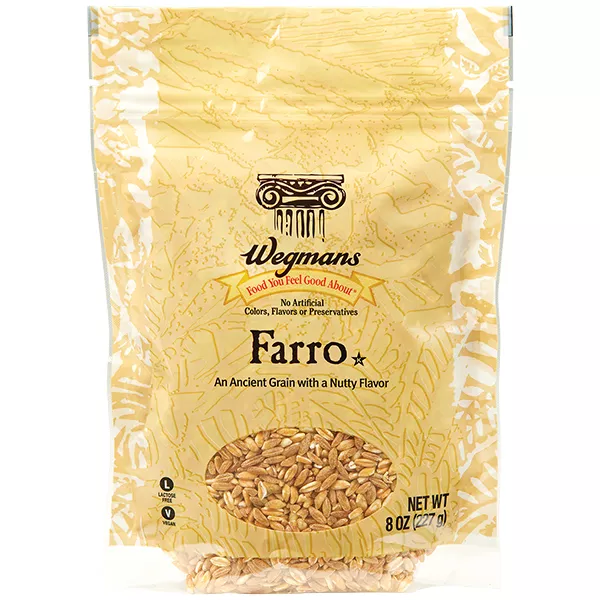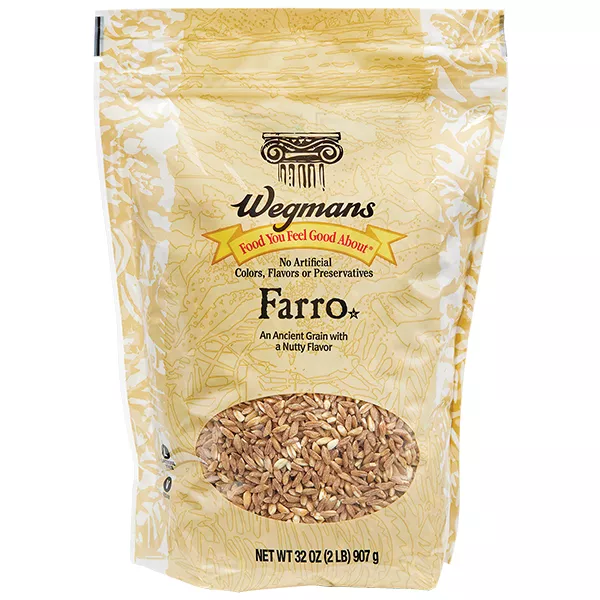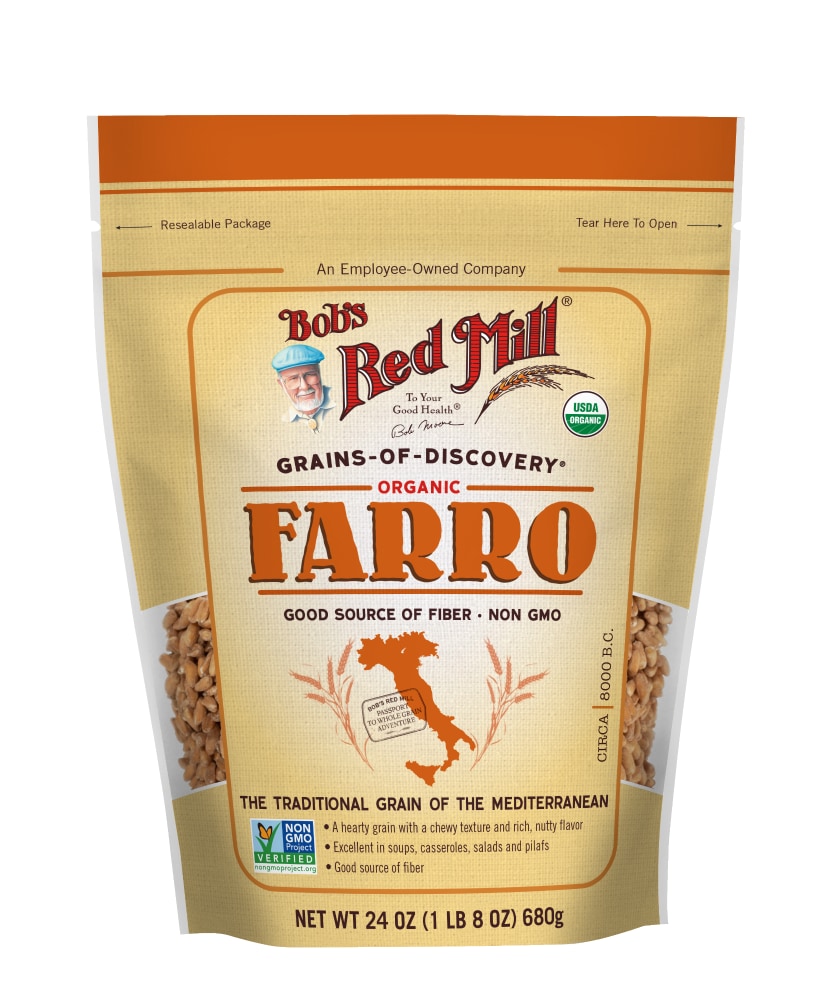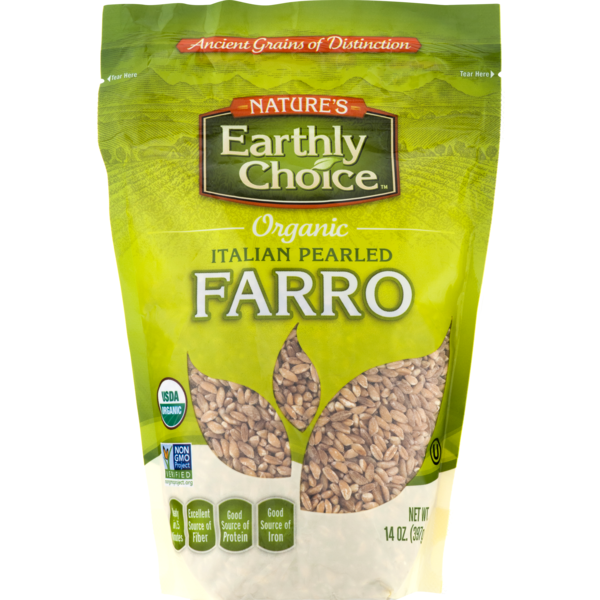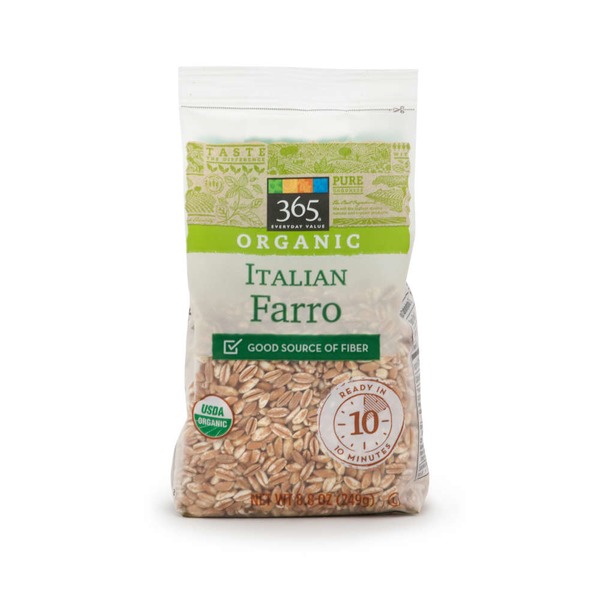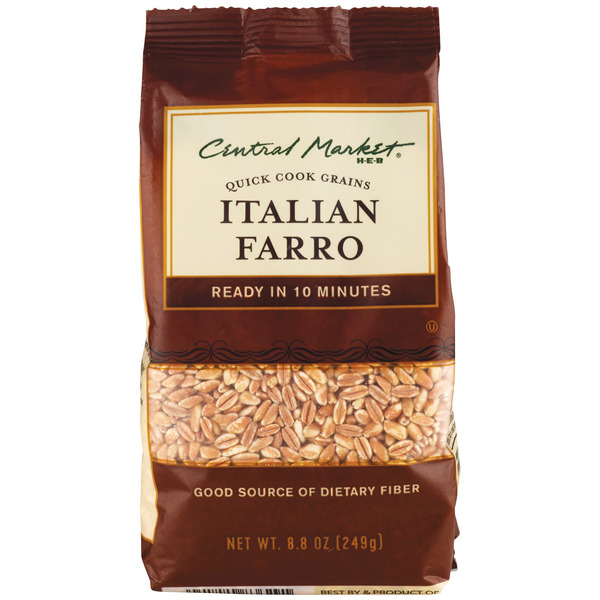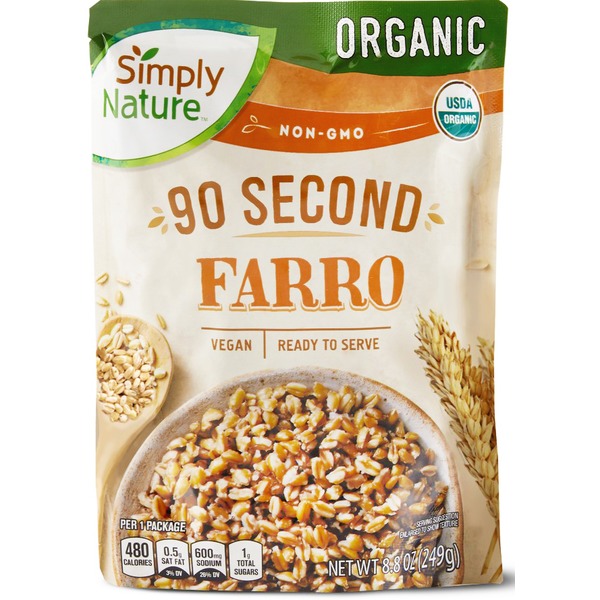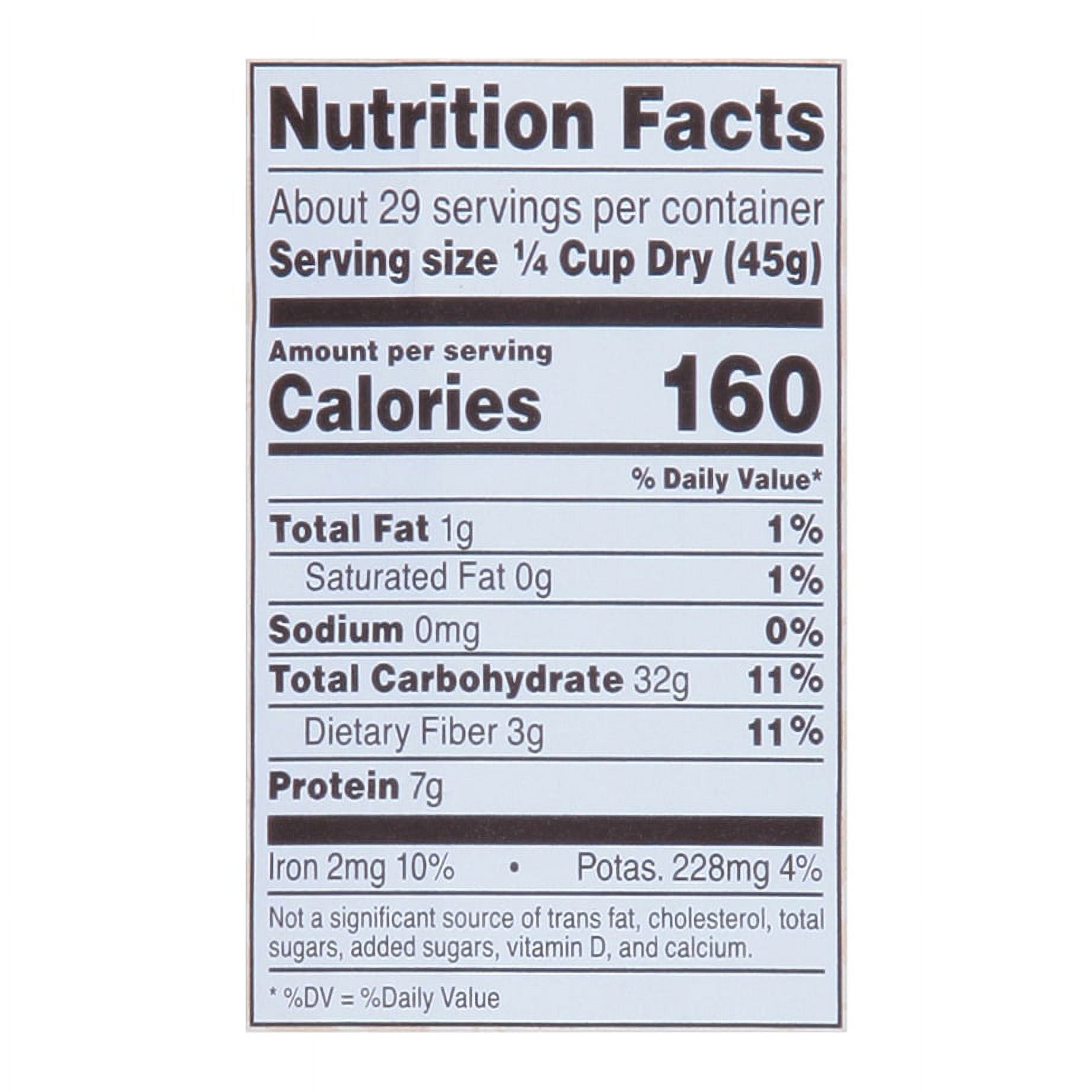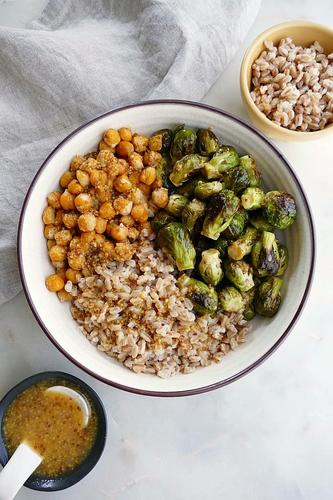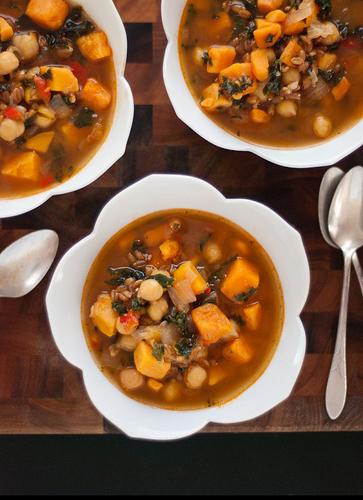SALADS
SOUPS
SIDE DISHES
Farro
Farro is an ancient whole grain originating from the Mediterranean and Middle East, widely used in Italian, Spanish, and North African cuisines. It is a versatile and nutritious food source, high in fiber, protein, vitamins, and minerals such as magnesium, iron, and zinc.
In home cooking, farro is a popular ingredient in salads, soups, and pilafs, adding a nutty flavor and chewy texture to various dishes. It can be used as a healthier alternative to white rice, pasta or other processed grains, and is easily cooked in water or broth until tender.
83%
CARBS
0%
FAT
17%
PROTEIN
219 Farro Products
Wegmans Farro
Wegmans Farro
Bob's Red Mill Organic Farro
Nature's Earthly Choice Organic Italian Pearled Farro
Trader Joe's, 10 Minute Farro
365 Everyday Value Organic Italian Farro
Kroger Ancient Grains Farro
Central Market Italian Farro Quick Cook Grains
Simply Nature Organic 90 Second Farro
Roland Pearled Italian Farro
Used In 20 Recipes
3
Sesame Farro Bowl with Crispy Salmon & Flavorful Spinach
4
Hearty White Bean Farro and Kale Bowl
3
Harvest Protein Bowls with Chimichurri Drizzle
4
Rustic Italian Chicken, Farro and Veggie Skillet
4
Maple-Kissed Salmon atop Savory Autumn Grain Salad
3
Autumn Harvest Grain Bowl
21
Honey Mustard Brussels Sprouts and Chickpea Bowls
82
Vegan Sweet Potato, Kale and Chickpea Soup
Farro Is Frequently Used With
Farro FAQ
Cooking with farro is typically straightforward but can become a challenge due to its different forms (whole, semi-pearled, pearled) each requiring different cooking times. The hull plays a vital role; the more of it is removed, the quicker cooking time it requires. People often mistake either form for the other, resulting in undercooked or overcooked farro. The key to getting the most out of this nutritious grain is to properly soak it overnight. This reduces cooking time and makes it easier for your body to absorb the nutrients. For a little-known trick: toast your farro before cooking it. This enhances its nutty flavor.
When it comes to buying farro, look for the whole grain variety, as it preserves most of its beneficial nutrients and fiber more than pearl versions. However, be aware that it also takes the longest time to cook. Another mistake many make is dumping out the water you cooked your farro in. That water is packed with flavor and can be used in sauces or soups.
Why is my farro crunchy?
What can I use farro for?
Should I rinse farro before cooking?
Do I need to soak farro before cooking?
How should I cook farro?
How do I know when farro is done cooking?
What's the difference between whole grain, semi-pearled, and pearled farro?
Can I cook farro in a rice cooker or an instant pot?
What if I don't have farro? What can I use in place of it?
Can I overcook farro?
Expiration & Storage Tips
When does farro expire?
Unopened farro, if stored properly in a cool, dry place, can last up to two years past the purchase date. Once opened, you should aim to use it up within six months. If you cook farro and have leftovers, it can retain its quality in the refrigerator for about three to five days. As for freezing, it's not commonly done, but cooked farro can be frozen and maintain good quality for a month or two.
How do you tell if farro is bad?
Farro has a distinct nutty aroma when it is fresh. If it smells off or unusual, chances are that it has gone bad. Additionally, if any moisture has somehow entered the farro's packaging, the grain might develop mold or discolouration, which are clear signs of spoilage. When it comes to cooked farro, it's easy to spot when it's bad. If you see, smell or taste anything off or unpleasant, it's best to toss it.
Tips for storing farro to extend shelf life
• Store the unopened package of farro in a cool, dark and dry place, away from heat or any sources of moisture.
• After opening, it's recommended to keep farro in an airtight container to avoid any moisture contamination, and stick to the same cool, dark and dry storage rule.
• Cooked farro should be placed in the refrigerator within two hours of cooking to slow down the growth of bacteria. Make sure to store it in a sealed container.
• If you decide to freeze cooked farro, make sure it is cooled and then quickly frozen to maintain quality. Use airtight containers or freezer bags. When defrosting, it's best to let it thaw in the fridge or use the defrost setting on your microwave.
EXPIRES WITHIN
10 - 14
MONTHS
Substitutes
See All
Health Info
Macros
30g
CARBS
0g
FAT
6g
PROTEIN
Allowed on these diets
LOW FAT
HIGH CALCIUM
VEGETARIAN
MEDITERRANEAN
LOW CARB
VEGAN
LACTOSE FREE
GLUTEN FREE
Contains these allergens
WHEAT

